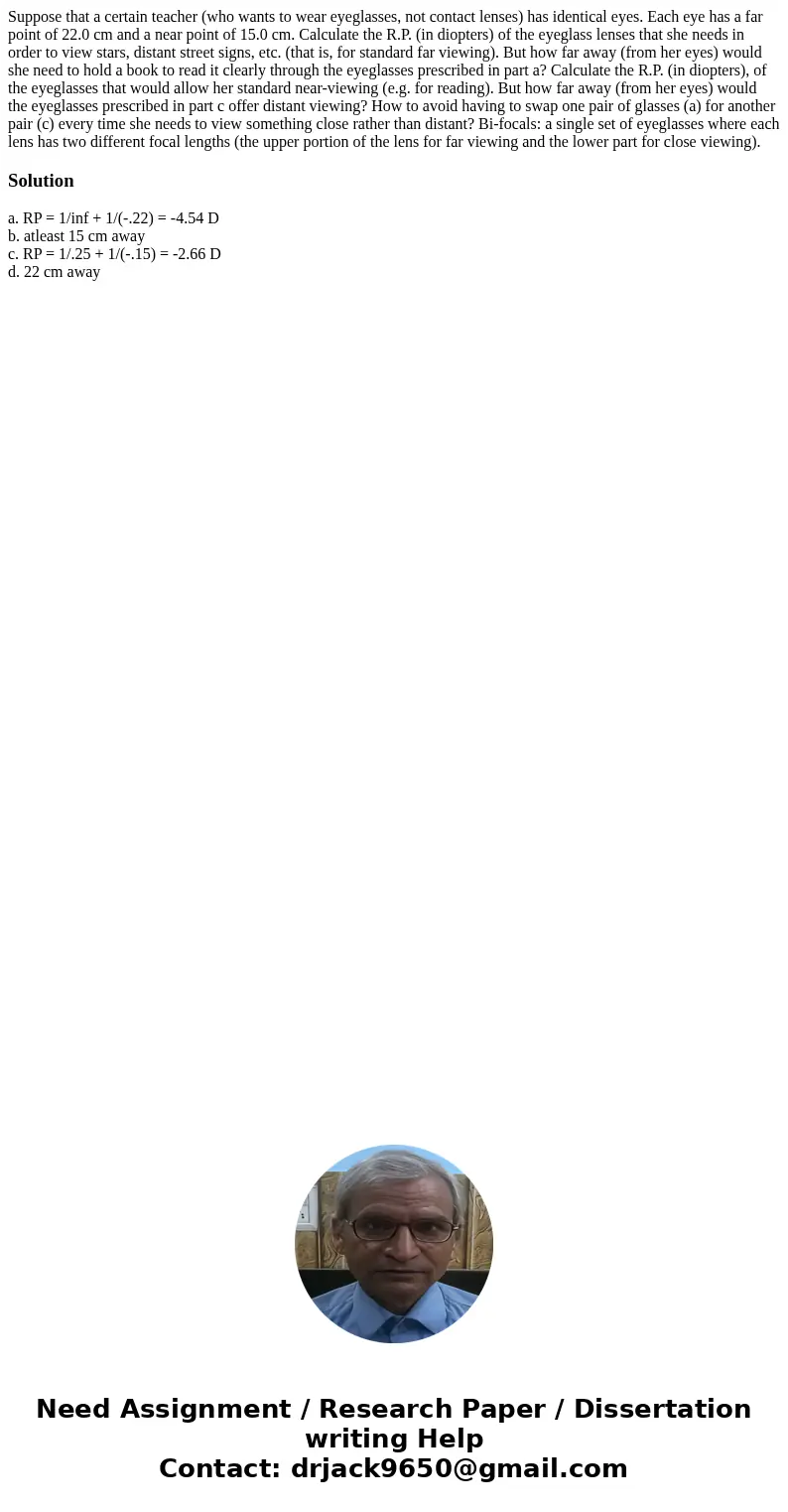Suppose that a certain teacher who wants to wear eyeglasses
Suppose that a certain teacher (who wants to wear eyeglasses, not contact lenses) has identical eyes. Each eye has a far point of 22.0 cm and a near point of 15.0 cm. Calculate the R.P. (in diopters) of the eyeglass lenses that she needs in order to view stars, distant street signs, etc. (that is, for standard far viewing). But how far away (from her eyes) would she need to hold a book to read it clearly through the eyeglasses prescribed in part a? Calculate the R.P. (in diopters), of the eyeglasses that would allow her standard near-viewing (e.g. for reading). But how far away (from her eyes) would the eyeglasses prescribed in part c offer distant viewing? How to avoid having to swap one pair of glasses (a) for another pair (c) every time she needs to view something close rather than distant? Bi-focals: a single set of eyeglasses where each lens has two different focal lengths (the upper portion of the lens for far viewing and the lower part for close viewing).
Solution
a. RP = 1/inf + 1/(-.22) = -4.54 D
b. atleast 15 cm away
c. RP = 1/.25 + 1/(-.15) = -2.66 D
d. 22 cm away

 Homework Sourse
Homework Sourse